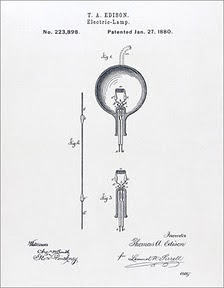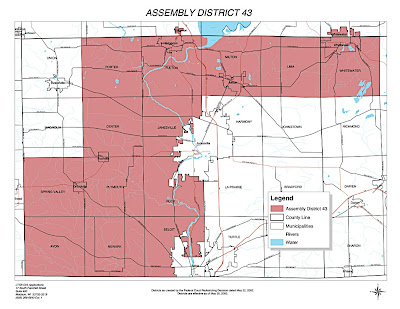About two months ago, the City of Whitewater prepared an analysis our small city’s fiscal condition, entitled, City of Whitewater Financial Trend Analysis (1988-2009) and City Budget Projections (2011-2016). I have embedded a copy of the document at the bottom of this post.
It’s a description of only part of the city’s life, a part much smaller than that of the daily condition of her fourteen-thousand, four-hundred fifty-four residents. Whitewater descends, from greater to smaller, in a simple order: the community, the municipal government’s overall fiscal condition, the municipal government’s annual budgetary position (merely a slice of a longer-term fiscal condition).
Most things that matter in the city, to most people, don’t concern municipal government, politics, bureaucrats, or politicians. That’s true even of economic matters; most economic activities are still free of the influence of Whitewater’s municipal government, and that’s how it should be.
The community’s actual condition constrains the municipal government’s fiscal prospects; the field on which people ‘live, work, and play’ is far larger than the smaller stage on which budgetary decisions take place.
It’s impossible to begin a post about the city’s fiscal prospects, or a single budget, without thinking about the real town in which Whitewater’s government exercises authority. It’s a town with high poverty, and especially large numbers of children living in poverty.
The latest Census figures are not available for the city, but they’ll certainly show an increase in poverty. Part — but I think only part — of this poverty increase will be a result of the recent recession. (There’s an indirect way to show how poverty increased in Whitewater from 2000 to 2010, even in supposedly better years during the decade. I think it’s unlikely Whitewater’s had only a recent spike in poverty from the recession. That’s a subject for another time.)
When government leaders see difficulties ahead, despite years of crowing about how the city is a paradise, with a brilliant municipal administration, it’s a refutation to those haughty claims. With easier times now a memory, and without the same and addictive supply of support from Madison forthcoming, Whitewater’s municipal administration can no longer contend credibly that it has been a great success.
The endless string of announcements, declarations, and assertions of triumphs was a distraction from the truth of a troubled economy. It was troubled even in seemingly flush years, when city projects were in full swing. Those projects weren’t uplifting to the condition of thousands in town; they obscured the daily struggles many in Whitewater faced.
Pages 3-50 of the document present the city’s fiscal analysis and outlook; pages 1-14 thereafter, in a separate section, present budget projections from 2011-16.
I’ll consider only the fiscal analysis, and address the budget later, as the city’s 2011 budget process unfolds.
For now, two parts of the fiscal analysis are notable: the City of Whitewater’s revenues per capita, and her net direct debt service.
Municipal government’s revenues per capita.
Page 5 tells the tale on revenues per capita, from 1988 to 2009. Beginning in 2001, revenues per capita begin a precipitous plunge, as the city gets less each year in revenue. The city’s analysis, following the graph, is telling:
The warning trend is that there is a decrease in net operating revenues per capita occurring in Whitewater. Over the studied 21 year period, adjusting for inflation, revenues per capita has varied from $275.2 (1989) to $355.66 (2001). For 2009, the Revenue Per Capita equals $278.97. Since 2001, revenues per capita has been steadily declining. This reclects [sic] lack of growth in the City’s major revenue source, – state shared revenues.
It’s true, of course, that the ground on which so much relies has been the shifting (simply eroding, really) sand of shared revenues. In this critical respect, we are considerably different from most of Wisconsin communities of similar size. I’ve written on this topic before.
Municipal government’s net direct debt service.
Page 35 shows how the city’s net direct debt service has been rising markedly from 2005 through 2009. Here’s the city’s analysis:
According to credit industry standards, debt service on net direct debt exceeding 20 percent of operating revenues is considered a potential problem. Ten percent is considered acceptable.
In analyzing this trend, the City in 2006 had a percentage of 24.35% which is considerably above the credit industry standard.
However, because the City has issued $ 3,618,622 in new debt for TID#4 in 2005, $500,000 in 2006, and $5,600,000 in 2008, this percentage will be increasing. The general fund has only a small portion of the total debt service outstanding for the City. 85% of the net direct debt service is due to borrowings for TID #4. The balance of 15% is supported by the shared revenue utility payment from the power plant.
Policy statements should be developed by the City that would indicate desirable levels of debt service as well as procedures for analyzing future debt service. Suggested policies are that 1) total debt service for general obligation debt will not exceed 10 percent of annual operating revenues and 2) before bonded long-term debt is issued, the impact of debt service on total annual fixed costs will be analyzed.
Tax incremental district 4 is a remarkable story, by itself. For now, it’s enough to see that our trend, however allocated, has been unfavorable.
There’s so very much said about how many changes there have been, how many projects, these last several years. Some are quite lovely. Yet, for it all, our fiscal condition is dependent — now more than ever, as shared revenues decline — on the economic health of our community.
That health will not be improved through big ticket items, as it has not been improved that way over this last decade.
We’ve lost, I think, more than we’ve gained.







